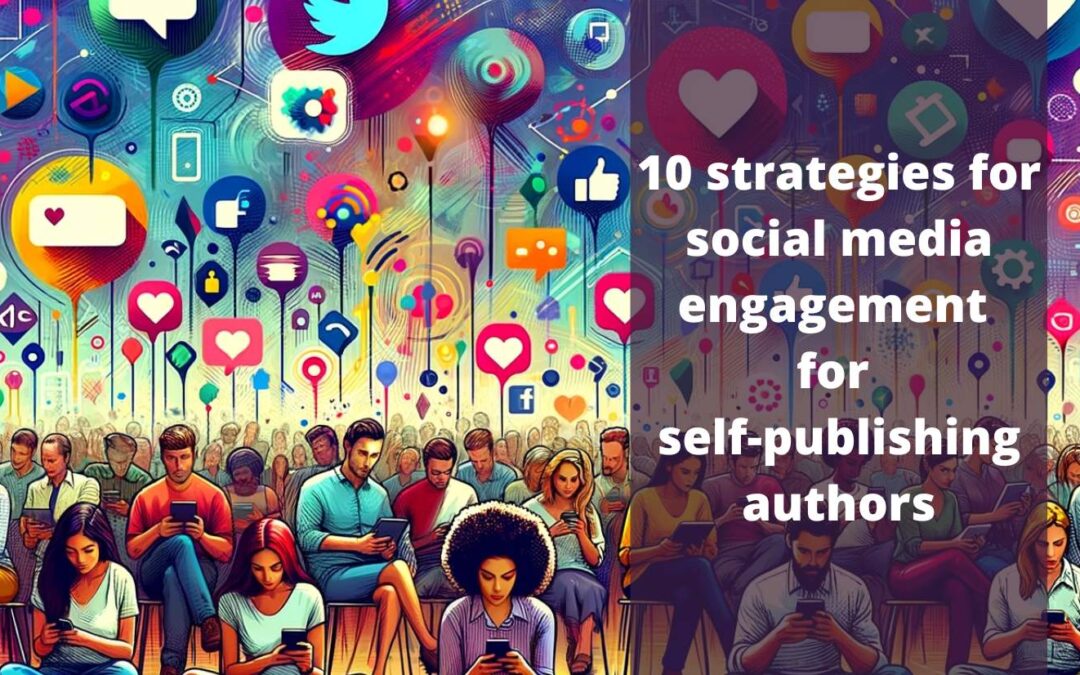If you’re a self-publishing author, mastering social media engagement is key to developing and nurturing your author platform. At the heart of this is delivering consistent value and keeping your followers hooked on your every post.
In this post, discover 10 strategies for social media engagement for self-publishing authors, focusing on how to keep your readers constantly engaged and invested in your content.
1 – Provide Consistent Quality Content
This comes under do as I say, not as I do, but consistency is king when it comes to social media. Plan your social media content so that you can post regularly, ensuring each piece is high-quality, insightful, and relevant to your niche. Consistency establishes a reliable presence, making readers eager for your next post. Think about aligning your content with your book themes or writing process insights.
Remember, most people do not post consistently, so by doing this one thing, you’ll stand out.
2 – Understand Your Reader Preferences
Your audience is unique, so what they like is not necessarily the same as someone else’s audience. Get to know what they prefer by using tools like social media analytics. Does your audience enjoy inspirational writing tips, or are they more into the behind-the-scenes of your writing journey? Tailor your content to these preferences to keep your readers deeply engaged.
3 – Diversify Your Formats and Visuals
These days, stories, reels and videos generally seem to be what is popular, so to keep and maintain your audience, try a diverse range of storytelling tools. Visual storytelling can be incredibly compelling, so try to incorporate a mix of formats – perhaps a video diary of your writing process, eye-catching graphics with writing tips, or snapshots of your work environment. These visuals will keep your feed interesting.
4 – Fostering Interaction
Interaction is the heart of social media. At the end of your posts, ask questions that encourage comments and discussions. One thing that I always suggest is to ask for help choosing your book title and book cover design. This gets them engaged in your journey, raises awareness of your book and brings them with you in your author journey.
5 – Creating a Sense of Community
Make your social media space a community hub for readers and fellow writers. As a reader, there is nothing that I love more than when a writer responds to comments I’ve made. Be that person. Respond to comments, feature user-generated content (like fan art or book reviews), and perhaps even create a dedicated group or forum for deeper discussions. This sense of belonging can turn casual readers into loyal fans. It works for me, at least!
6 – Exclusive Content
Make your audience feel special by sharing sneak peeks behind the scenes, giving them exclusive excerpts from your upcoming book, or providing special offers. This type of content adds a layer of exclusivity and personal connection. Making your readers feel special will hopefully make them more invested in you and your work.
7 – Storytelling in Posts
As an author, you have a knack for storytelling. Use it in your social media posts and tell us the story of your journey both as an author but also as a human being. Craft captivating stories or anecdotes related to your writing life. A well-told story can make your posts more engaging and relatable. Remember: your readers want to get to know you.
8 – Keeping Up with Trends
Stay relevant by integrating current trends and events into your content. This shows that you’re in tune with the world beyond your books, making your content more diverse and engaging. That being said, remember that old adage of never talking about politics or religion. These days, beliefs that were accepted in my generation will get you cancelled with the current one!
9 – Educational and Informative Content
This is especially important for non-fiction authors looking to build their authority. As mentioned in previous posts, building a knowledge-based blog will add value to your readers and is loved by Google. Whether it’s about your field of expertise or insights into your writing journey, educational content positions you as an authority and adds immense value to your readers.
10 – Ask for User Feedback in Content Creation
Creating engaging content involves asking questions with the intent of seeking answers and feedback. Ask for help in deciding on your next blog post topic by running a poll, or ask for suggestions on what they’d like to see more of. This direct involvement can significantly boost reader engagement.
By focusing on these 10 strategies, you’ll not only maintain your existing reader base but also attract new followers. Learn to engage your readers with engaging, informative, and personalized content, all of which are key to building a strong, loyal community around your self-publishing brand.

